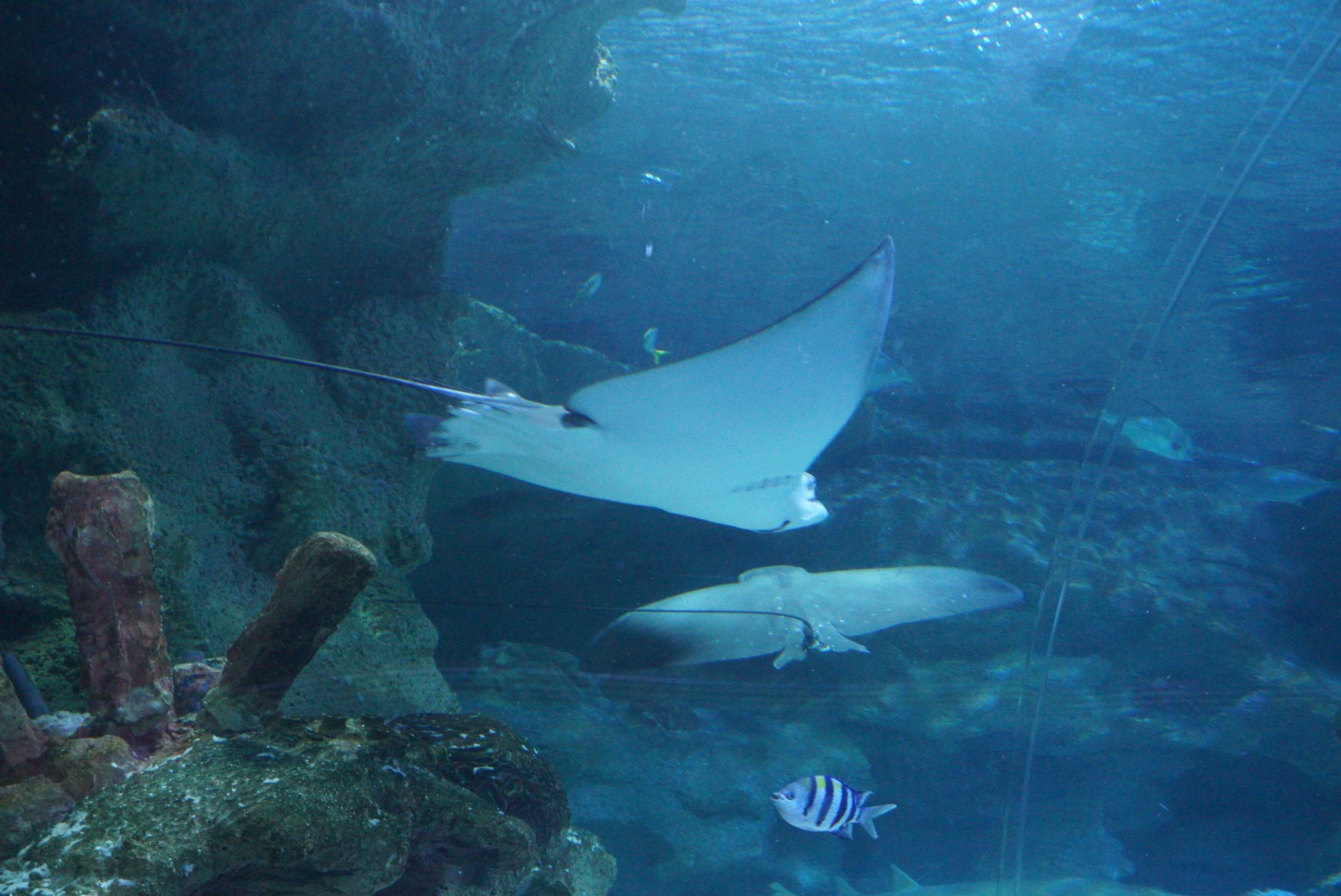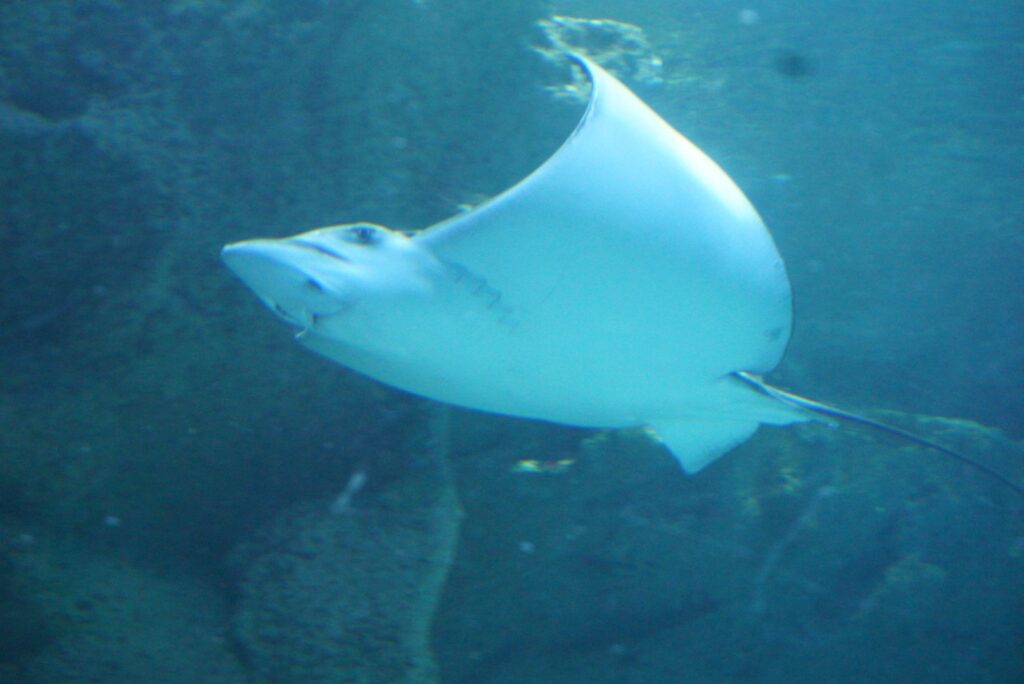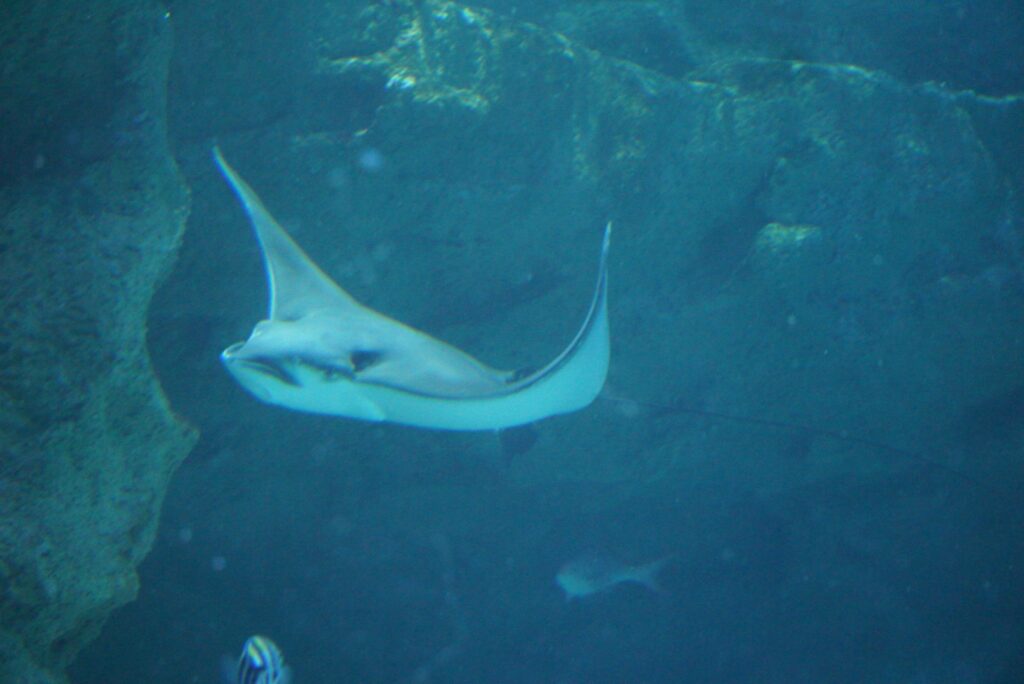
AETOBATUS OCELLATUS
When fully grown the Ocellated Eagle Ray will be the biggest Rays at Blue Planet Aquarium! These graceful gliders are from a group of cartilaginous fishes in the family Myliobatidae. Found mainly in the tropical indo-west pacific region in reefs and shallows, however they are active swimmers and can be found in deeper open waters.
Type
Ray
What do they eat?
Small fish, Crustaceans, Molluscs, Worms and Clams
Size
Up to 3m wide
Water Type
Salt Water
Where are we?
Tropical Indo-West Pacific region
See Us At
Ocean Exhibit
What are Eagle Rays like?
Eagle rays are known for their distinctive appearance, they have flattened bodies and long pointed snouts, as well as wing-like pectoral fins allowing them to gracefully glide through the water with a resemblance to eagles, this is how they get their name.
Habitat of an Eagle Ray
Typically, ocellated eagle rays are found mostly near coastlines in habitats such as coral reefs and sandy bottoms but can also be found in open waters. Eagle rays can be found worldwide across the Indo-Pacific to Western Atlantic Oceans. They are active swimmers unlike the southern stingray, who you can also find in our Ocean Exhibit.
What do Eagle Rays eat?
Ocellated eagle rays are carnivores with a varied diet. They feed on small fish, crustaceans, molluscs and sometimes even worms and clams. They have flattened teeth which help them to crush shells. Eagle rays use a behaviour called “pursuit predation” This is where they use their elongated snouts to dig into sandy bottoms in order to expose prey that they then consume.
Where can you find us?
In our Ocean Exhibit

Quick Facts
The white spots on their backs are unique to each eagle ray, just like a fingerprint!
Ocellated Eagle Rays have long whip like tails with a barbed venomous spine at the base.
Eagle rays can jump out of the water, sometimes up to a few feet. It is thought that this is a means of communication or courtship, although research scientists are still trying to determine the reason behind this.
Eagle eyed fans of Finding Nemo may have noticed that the character ‘Mr Ray’ is an eagle ray.
Overfishing is one of the ocellated eagle rays biggest threats, often finding themselves as bycatch in fishing nets.
They are ovoviviparous, this means that the eggs develop and hatch inside the eagle rays body and then they give birth to live young.
